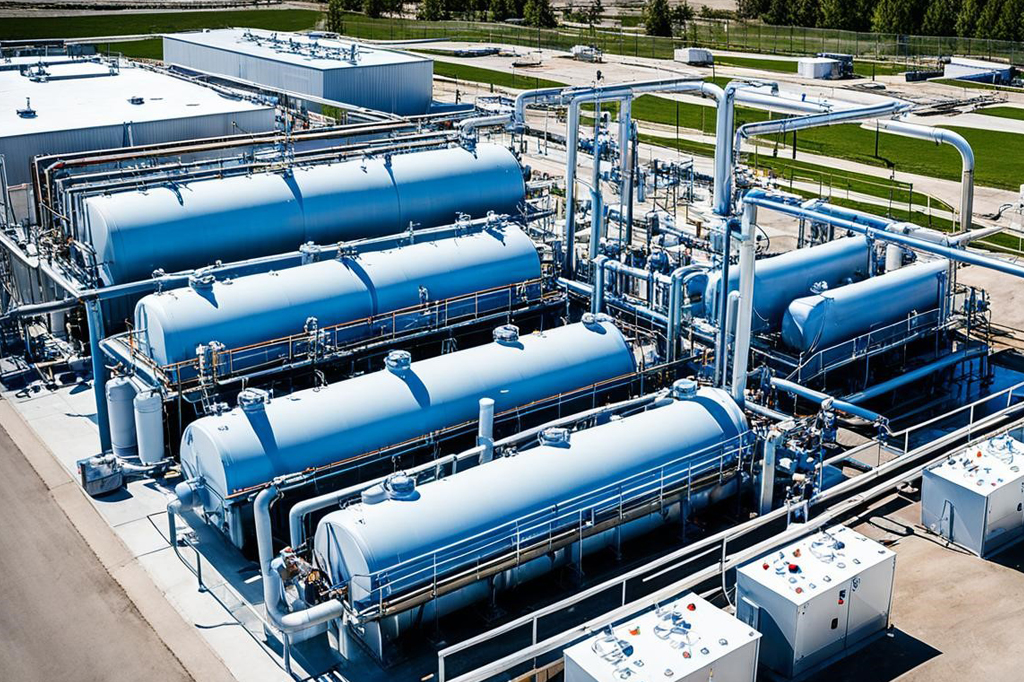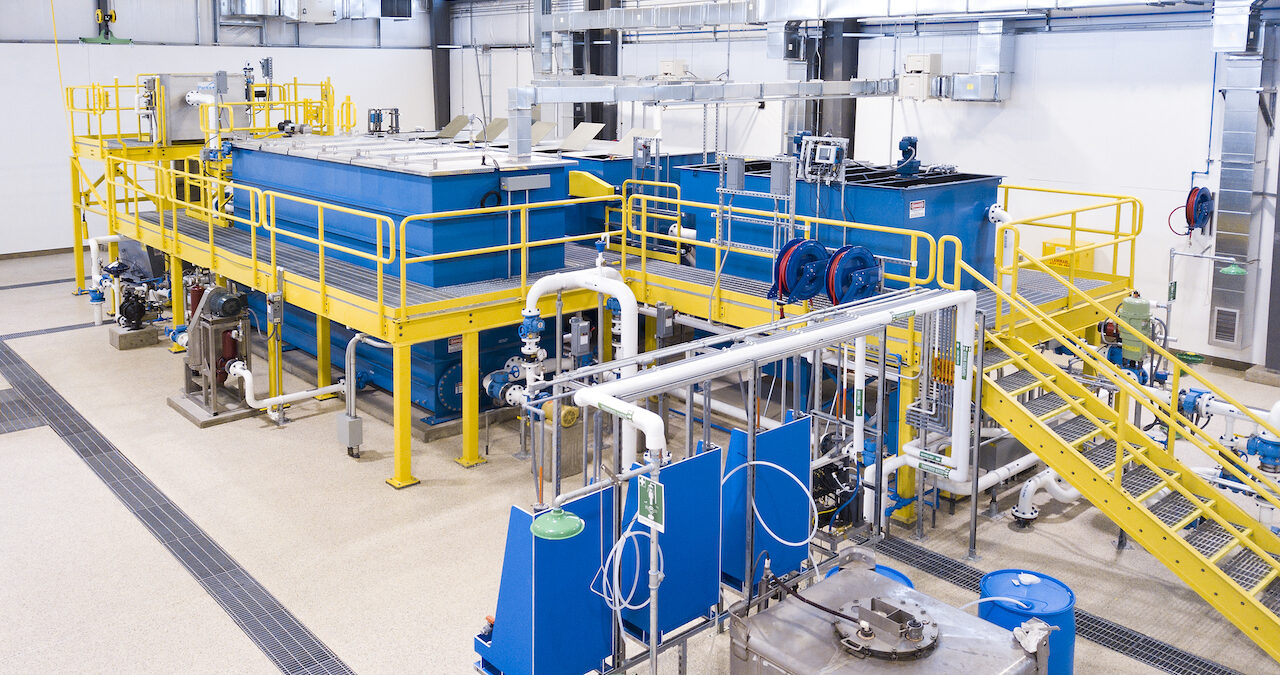Obstacles and Solutions in Industrial Waste Water Therapy
The treatment of commercial wastewater presents a multifaceted selection of difficulties, ranging from stringent regulative conformity to the intricacies of price monitoring and technological limitations. The irregularity in waste make-up further complicates the efficiency of traditional treatment techniques, often resulting in intensified operational expenditures.
Regulatory Compliance Difficulties
How can commercial centers navigate the complex landscape of regulatory compliance in wastewater therapy? The governing framework governing wastewater administration is complex, commonly varying by territory and kind of market. Facilities should follow government, state, and neighborhood regulations that determine effluent quality requirements, discharge limits, and monitoring needs. Failure to conform can cause extreme penalties, including fines and functional closures.
To effectively manage these conformity obstacles, centers must carry out durable monitoring and reporting systems that make certain real-time data collection and evaluation. Routine audits and risk assessments can identify prospective compliance gaps, allowing for aggressive adjustments in treatment procedures. Staff member training programs concentrating on regulative understanding and ideal methods are necessary to cultivate a culture of conformity within the organization.
In addition, engaging with regulatory companies can provide beneficial insights and clarify uncertain guidelines. Facilities might additionally profit from seeking advice from with ecological professionals that concentrate on wastewater treatment conformity, making sure that they remain informed of progressing laws. By adopting these methods, industrial centers can not just fulfill compliance needs however likewise enhance their functional effectiveness and ecological stewardship.
Expense and Economic Barriers
Browsing regulatory compliance in wastewater treatment typically offers significant monetary obstacles for commercial facilities. The costs related to applying necessary treatment innovations, preserving conformity with rigorous regulations, and managing operational costs can be intimidating. Several companies encounter high first capital expenditures for the construction or upgrading of wastewater treatment plants, which may strain budgets, particularly for medium-sized and tiny enterprises.
Furthermore, ongoing operational costs, including chemical, upkeep, and labor inputs, add to the monetary concern. The unpredictability of varying energy prices and the potential need for added financial investments to fulfill progressing guidelines worsen these economic pressures. In a lot of cases, the absence of monetary rewards or support from federal government bodies makes it much more difficult for businesses to validate financial investments in sophisticated treatment systems.
Additionally, the financial feasibility of wastewater therapy solutions is typically questioned, specifically for industries with limited revenue margins. It is vital for commercial facilities to discover affordable approaches, such as adopting ingenious funding choices, engaging in collaborations, and leveraging emerging modern technologies that can assist mitigate these financial barriers while making certain conformity with environmental criteria.

Technical Limitations
Many technological constraints impede the effectiveness of commercial wastewater treatment procedures. One significant difficulty is the inadequacy of existing therapy innovations to deal with complicated pollutants.
Additionally, the scalability of therapy technologies presents a challenge. While some innovative methods, like membrane purification or advanced oxidation, show pledge in regulated atmospheres, their execution on a larger range can be much too expensive and practically tough. Upkeep and functional complexities even more make complex the fostering of these systems, especially for smaller sized sectors with limited technical experience.
The integration of real-time tracking modern technologies also stays inadequate in several therapy facilities. Without effective tracking systems, drivers can official site not adequately evaluate treatment effectiveness or identify potential failures, resulting in inconsistent effluent high quality. As a result, resolving these technical constraints via r & d, alongside investment in innovative services, is important for improving the effectiveness of commercial wastewater treatment and guaranteeing regulative compliance. Industrial Waste Water Treatment.
Variability in Waste Composition
In the realm of industrial wastewater therapy, the irregularity in waste structure presents a formidable obstacle. Industries produce wastewater with diverse qualities, influenced by variables such as manufacturing processes, raw products, and functional methods. This heterogeneity makes complex the treatment process, as standard systems commonly have a hard time to effectively resolve the vast array of toxins existing.
As an example, wastewater from food handling may have high degrees of raw material, while effluents from chemical manufacturing can include heavy steels and hazardous materials. This difference necessitates versatile therapy methods to make certain compliance with ecological policies and shield public health and wellness. Additionally, changes in waste make-up can happen with time, influenced by adjustments in production routines, upkeep activities, or the intro of new products.

Cutting-edge Treatment Solutions
Cutting-edge treatment options are important for resolving the complexities of commercial wastewater monitoring. Conventional approaches typically drop short in successfully getting rid of a variety of contaminants, especially in centers with diverse effluent streams. Recent innovations concentrate on integrating sophisticated technologies to boost therapy efficiency and sustainability.
One appealing technique is making use of sophisticated oxidation procedures (AOPs), which utilize effective oxidants to deteriorate organic contaminants. AOPs, consisting of photocatalysis and ozonation, can significantly decrease hazardous materials and boost effluent quality. Additionally, membrane bioreactor (MBR) innovation has actually obtained grip, combining biological treatment with membrane filtration, leading to top notch effluent and lowered impact.
An additional cutting-edge remedy is the implementation of resource recovery systems. Strategies like anaerobic food digestion not just deal with wastewater yet additionally generate biogas, which can be used as a renewable resource source. Furthermore, the adoption of expert system and artificial intelligence designs can maximize therapy processes by forecasting variants in wastewater make-up, therefore boosting functional effectiveness.
These cutting-edge remedies not Discover More Here only address regulatory conformity however additionally advertise environmental sustainability, leading the way for a much more effective and resilient commercial community.
Conclusion
To conclude, attending to the challenges of commercial wastewater treatment calls for a diverse approach that incorporates regulatory conformity, cost monitoring, and technological innovations. Ingenious solutions, such as sophisticated oxidation procedures and membrane bioreactor modern technology, offer paths to enhance therapy efficiency. Real-time monitoring systems and collective involvement with regulative companies can advertise sustainable methods while alleviating economic pressures. A dedication to continual improvement in treatment methods will ultimately add to the efficient monitoring of commercial wastewater and environmental security.
The therapy of commercial wastewater provides a diverse variety of obstacles, varying from rigorous governing conformity to the details of price monitoring and technical resource restrictions. Industrial Waste Water Treatment.Browsing regulative compliance in wastewater treatment frequently provides significant financial challenges for commercial centers. Resolving these technical restrictions with research and development, along with financial investment in innovative services, is essential for enhancing the efficacy of commercial wastewater therapy and making certain governing conformity
Wastewater therapy centers have to invest in robust surveillance systems and versatile treatment technologies qualified of fitting varying influent characteristics.In verdict, attending to the challenges of commercial wastewater therapy requires a complex technique that integrates regulatory conformity, cost monitoring, and technical advancements.